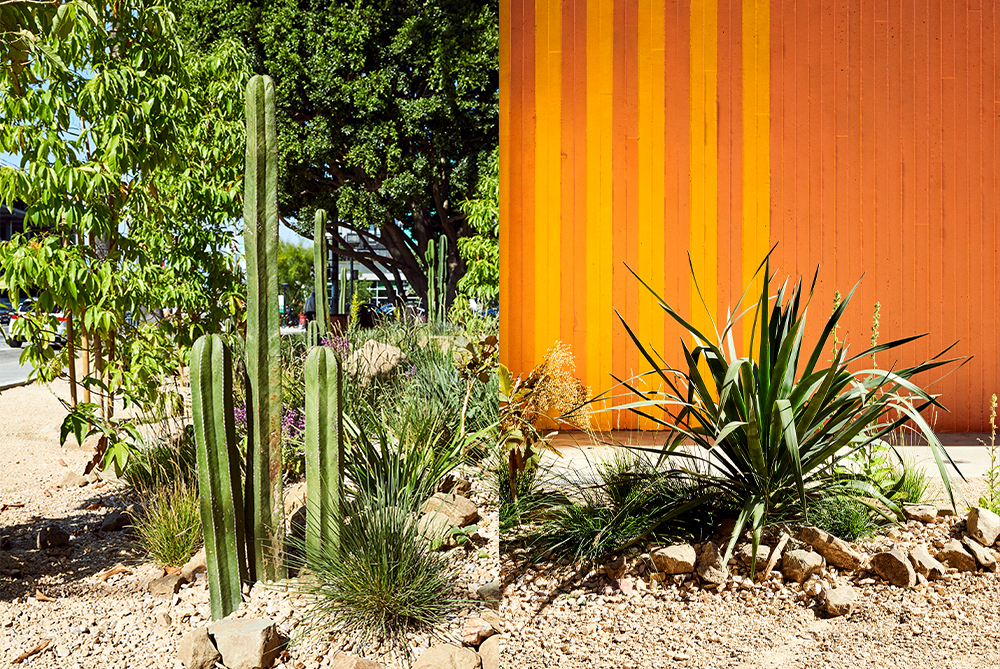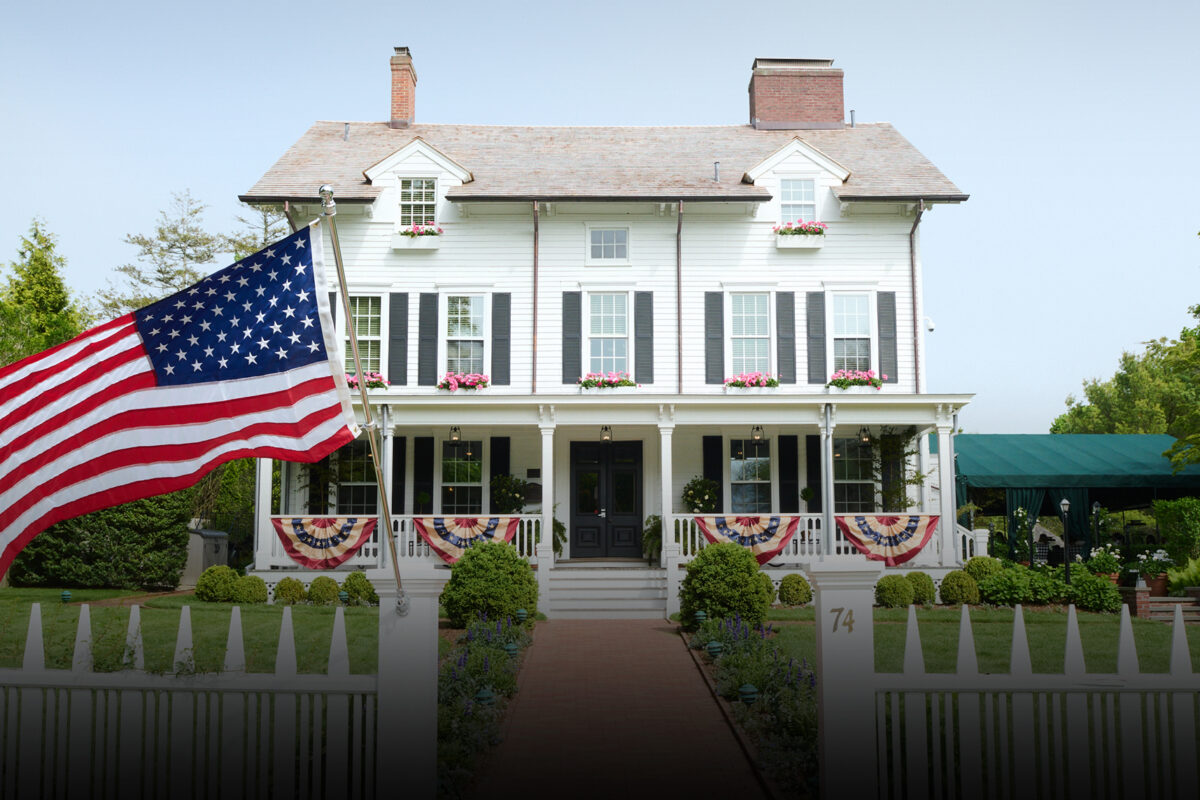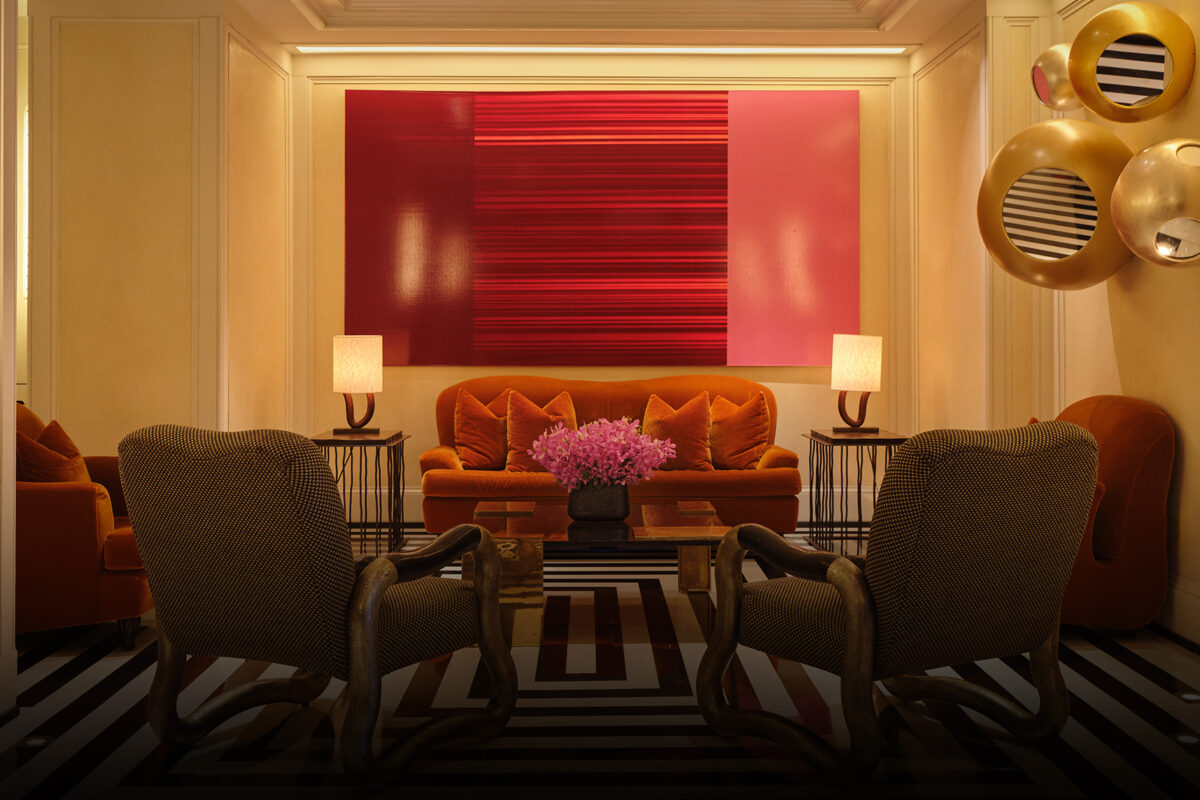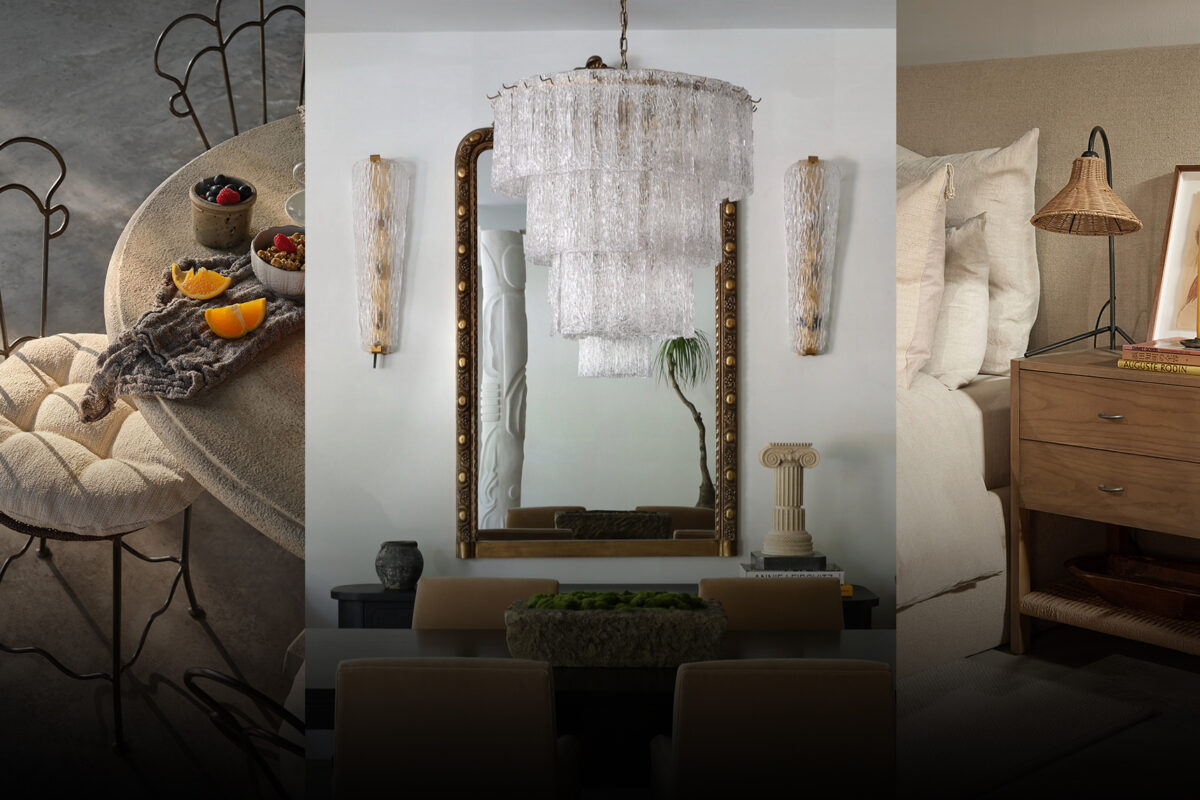Mixed-use center Platform LA tapped the community’s botanical pros, artsy types and suppliers of raw materials to turn an unconventional green space into a place for some urban Zen
Words by ANH-MINH LE
For David Godshall, the recently opened Platform Park was a chance to dream big. Last fall, David Fishbein and Joseph Miller, the founders of Platform LA, reached out to the principal of landscape architecture firm Terremoto about the vacant area next to their Culver City retail and dining hub, beneath a transit overpass. “They basically gave us carte blanche to do something radical and weird,” Godshall says. “Their vision was no more specific than they wanted to create an innovative public space that also had the ability to infrequently accommodate programmed events, which is a rather broad prompt.”
Fishbein says, “We gave [Terremoto] macro goals — unique yet usable, built for the neighborhood and community — and let them run with it!” The end result is a 10,300-square-foot “botanically forward” (as Godshall puts it) urban oasis.
Terremoto’s portfolio includes Scribe Winery in Sonoma and The French Laundry in Napa, as well Mohawk General Store’s Santa Monica location. The firm handled the hardscape and garden of This Is Us star Mandy Moore’s midcentury modern home in Pasadena, and also helped open what Godshall describes as “a punk rock nursery” in Glassell Park called Plant Material. Among its current endeavors are an abstract art installation of a garden on the roof of the Los Angeles Athletic Club, and an Elysian Park project dubbed “Test Plot,” where the team is trying out a variety of methods to re-ecologize parkland with native species.
For the Platform Park’s plant scheme, Terremoto brought on board Topanga-based Jonathan Froines. “The planting design is of course regionally appropriate with some native species mixed in there as well,” Godshall explains. “But most importantly, Jonathan designed it with the super-complex sun condition in mind. The train tracks cast these long, deep shadows across the site, and when you’re there, the light changes constantly. It’s like an incredible, slow strobe light, and thus the plant species that were chosen can thrive in this slightly unconventional condition.”
In a blog post this past spring, Froines detailed his plant palette: bocconia frutescens, whose various native habitats, from roadsides to woodlands, make it ideal for Platform Park; dahlia campanulata, which the designer deems a more experimental choice; and sparrmannia africana, which thrives in low and indirect light, and he anticipates will reach 12 feet in size. In total, Froines selected more than 50 plants for the park.
Beyond the greenery, Platform Park is appointed with elements that invite interpretation and play, that can serve as object, furniture or sculpture. In lieu of the more typical metal outdoor furniture, for instance, there are sawed and raw large-scale timbers. In keeping with Terremoto’s desire to “do the best we can to build projects that relate to the places in which they sit,” explains Godshall, the wood was sourced from Angel City Lumber, a Boyle Heights business that mills the lumber from felled trees in Los Angeles. The decomposed granite, gravel and boulders came from Palm Springs.
When Fishbein and Miller began developing the concept of Platform eight years ago, they knew they wanted to transform the adjacent MTA-owned dirt lot into a community park. The pair coordinated with the MTA and then enlisted Terremoto — “a dream collaborator for this project,” Miller says. “They think outside of the box and have Los Angeles in their DNA. We had admired the creativity and flawless execution of their previous projects, and wanted to work with a partner to create something unexpected yet perfectly suited.”
According to Godshall, “[Platform Park] captures our philosophy right on.” He continues, “We don’t conform to any particular style of garden-making, and this park definitely doesn’t fall into any category easily. It’s a lot of things at once. We love French gardens, Japanese gardens, native gardens, the wilderness of vacant lots, all of it. We’re interested in making landscapes that mean and say something — pretty, meaningless spaces are of no use to us — and there’s a lot of layers to digest at Platform Park. Or, you don’t need to analyze it at all, and you can just enjoy it, and that’s fine, too.”
Given its unique context and location, Platform Park is, visually, unlike anything Godshall and his colleagues, Diego Lopez and Rachel Tucker, had undertaken in the past. “At Terremoto,” he shares, “we secretly like projects with fast timelines, not a lot of bureaucracy and a small budget if the client is willing to allow us to be experimental. This project had all those things, and we believe that it’s exactly because of those constraints that it’s successful.”
Feature image: To bring PLATFORM PARK to life in Culver City, PLATFORM LA partnered with landscape architecture firm TERREMOTO and horticulturist JONATHAN FROINES, among other local creatives.
Aug. 20, 2019





